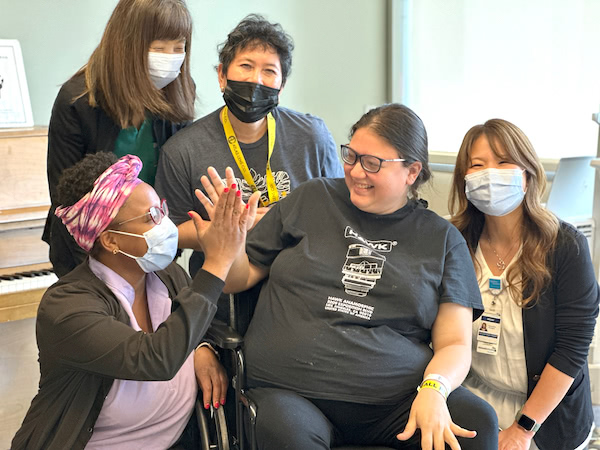Enjoy the Sun Safely
Mar 27, 2023

The sun is vital for good health — it stimulates the body to produce vitamin D, boosts mood and improves immune function.
Without proper protection, however, sun exposure can cause long-lasting skin damage.Renee Christenson, PA, a board-certified dermatology physician assistant, shares tips for safely enjoying the sun while avoiding its harmful effects.
How damage develops
When you have exposure to the sun’s ultraviolet (UV) rays without sun protection, your skin becomes damaged — and that damage changes your DNA, Christenson says. “We don’t lose sun damage. It sticks around and accumulates over time,” she explains. “We carry that damage in our DNA throughout our life.”
With age, the body’s immune system is less effective at repairing damaged DNA, which is when precancers and cancers start to develop on the skin. In fact, one in five adults in the United States will develop skin cancer in their lifetime, according to theAmerican Academy of Dermatology.
“Not only does sun damage cause skin cancer, but it also causes our skin to show increased signs of aging,” Christenson adds. “As we get older and begin to lose collagen, DNA damage results in fine lines, wrinkles and discoloration.”
Protection for life
Though we don’t always see the effects of sun exposure until later in life, we get nearly a quarter of our accumulative sun exposure by the time we’re 18, according to theSkin Cancer Foundation. That’s why, Christenson says, it’s important for people of all ages to protect their skin from UV rays. “If you put sunscreen on your children every day, you are setting them up for great skin health,” she says.
“I recommend that people wear sunscreen every day on their face, neck, chest, arms and hands — those areas of greater chronic sun exposure,” she says, adding that we can get UV damage even doing simple activities such as going to the mailbox or walking into the grocery store, and especially while driving. “Your hands and arms are exposed the entire time you’re driving, even when the sun is hidden behind clouds.”
Choose your SPF
If you feel overwhelmed by the many sunscreen options, you’re not alone. Christenson simplifies it by recommending SPF 30 for daily use and SPF 50 if you plan to spend extended time in the sun, such as going for a hike or spending the day on the water. Choose broad-spectrum sunblock, which protects you from both UVA and UVB rays, and reapply every two to three hours for optimal protection.
If you plan to swim, use sunblock that is water-resistant for up to 80 minutes, and always reapply to dry skin after getting out of the water.
“It’s also a good idea to cover parts of the skin that are prone to sun exposure, such as arms, chest and even your scalp,” Christenson says. “SPF protective clothing is great because you can throw a light shirt and hat on over your regular clothes while you’re driving, golfing or going for a walk.”
Get ahead of skin damage
Your primary care provider or dermatologist can evaluate you for skin cancer as well as treat a wide array of other skin concerns.Find a doctor near you.


